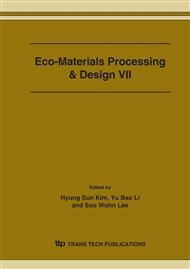[1]
J.E. Philpott: Hydrogen diffusion technology, Platinum Met. Rev., 29(1985), 12.
Google Scholar
[2]
C. Nishimura, M. Komaki, S. Hwang, M. Amano: J. Alloys Compd., 330-332(2002), 902-906.
Google Scholar
[3]
S. Jayalakshmi, E. Fleury, Y.C. Kim, K.B. Kim: Thermal stability and mechanical properties of Hydrogenated Zr-Ni-Nb-Co amorphous alloy, Mater. Sci. Forum, 486-487(2005), 497-500.
DOI: 10.4028/www.scientific.net/msf.486-487.497
Google Scholar
[4]
A. Inoue: Mater. Trans. JIM, 36(1995), 866.
Google Scholar
[5]
B.H. Howard, R.P. Killmeyer, K.S. Rothenberger, A.V. Cufini, B.D. Morreale, R.M. Enick: Hydrogen permeance of supported palladium-copper alloy membranes over a wide range of temperatures and pressures, J. Membr. Sci., 241(2004), 207-218.
DOI: 10.1016/j.memsci.2004.04.031
Google Scholar
[6]
A.D. Le Claire: Permeation of gases through solids, Diffus. Defct Data, 33(1983), 1. Ni-Nb-Ta Substrate Pd-coated layer Fig. 3. SEM image of a cross section of the Pd-coated Ni60Nb30Ta10 amorphous alloy membrane prepared by sputtering method. Fig. 4. AES depth profile of the Pd-coated Ni60Nb30Ta10 amorphous alloy. Average sputtering rate was about 100� /min.
DOI: 10.1016/j.msea.2006.03.144
Google Scholar


